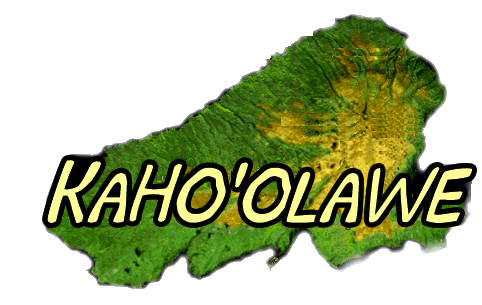
Home
Introduction to Kaho'olawe
PowerPoint
Introduction
Kaho'olawe Surveyor Software
Development Team
Role Cards
Key Elements for Reinhabiting
the Island
Presentation
Assessment
Related readings:
|
RETURN
TO HAWAIIAN STEWARDSHIP RETURN TO HAWAIIAN STEWARDSHIP Efforts to return the island to the people of Hawaii started as soon as it was taken for military purposes in 1941. For the last 18 years, the Protect Kaho`olawe `Ohana led the Native Hawaiian and general public protest to end the bombing and return the island. Beginning in 1976 the `Ohana carried out a series of occupations of the island which brought national attention to the movement. These occupations led to arrests and in some cases imprisonment or barring of the protesters from returning to Kaho`olawe. In 1978, the `Ohana filed a federal civil suit to force compliance with environmental, historic site, and religious freedom laws. The `Ohana has campaigned for the past 18 years to return the island to the State, and to remediate it to provide for cultural, religious, and educational activities. In 1980, the suite was settled with a Consent Decree which provided for:
Under the Consent Decree, the `Ohana has taken over 5000 visitors to Kaho`olawe. Ancestral shrines, temples, and places have been rededicated and religious ceremonies conducted, hiking trails cleared, and cultural-use areas established. The US. Navy has cleared 10,000 acres of surface ordnance and eradicated the goats. Soil conservation and re vegetation programs are helping to restore and revive the environment of Kaho`olawe. In 1981, the entire island was placed on the National Register of Historic Places. In 1990, President Bush issued an order to halt the bombing and establish a congressional commission, the Kaho`olawe Island Conveyance Commission (KICC), to create the terms and conditions for return of the island to Hawaii. From December 1990 through July 1993, the Commission conducted public hearings and cultural, environmental, and ordnance studies to develop recommendations for the future of the island. In its report of March 1993, the KICC determined that Kaho`olawe is a wahi pana and a pu`uhonua--a special place with unique and important cultural, archaeological, historical, and environmental resources of local, national, and international significance. The KICC recommended that,
Based upon the final recommendations of the Conveyance Commission, Congress voted in November 1993 to permanently stop all military training and bombing of Kaho`olawe and return title of the island to the State of Hawaii. Congress also authorized funding for the cleanup and restoration of the island's cultural and natural resources over the next ten years, under conditions of a special Memorandum of Understanding between the US. Navy and the State of Hawaii. On May 7, 1994, Kaho`olawe was returned to the State of Hawaii. In 1993 the Hawaii State Legislature established the Kaho`olawe Island Reserve consisting of Kaho`olawe and the ocean waters extending two miles from the island. The new law provides that the Kaho`olawe Island Reserve shall be used solely and exclusively and reserved in perpetuity for the preservation and practice of all rights customarily and traditionally exercised by native Hawaiians for cultural, spiritual, and subsistence purposes; for the preservation and protection of the Reserve's archaeological, historical, and environmental resources; for rehabilitation, re vegetation, habitat restoration, and preservation; and for education. Rules and regulations to manage the island Reserve and govern all access and activities on the island will be developed by the seven-member Kaho`olawe Island Reserve Commission. Commercial uses are strictly prohibited, except that the Commission is authorized to adopt rules to permit fishing in the waters around Kaho`olawe, consistent with the purpose of the law and which takes into consideration the health and safety of the general public. The island will expand as a learning center where traditional Hawaiian cultural customs, beliefs, and practices can be freely practiced and flourish.
|
